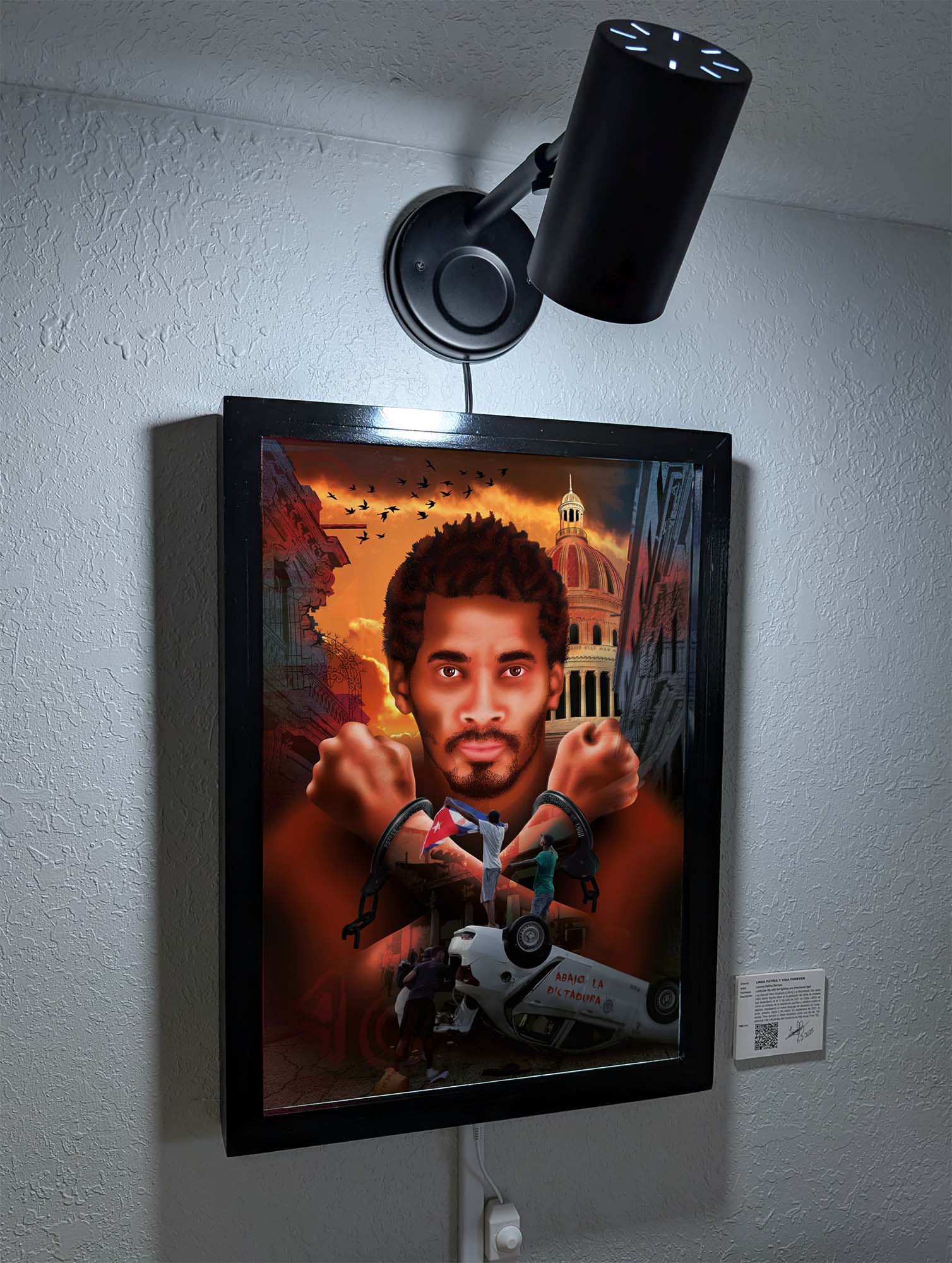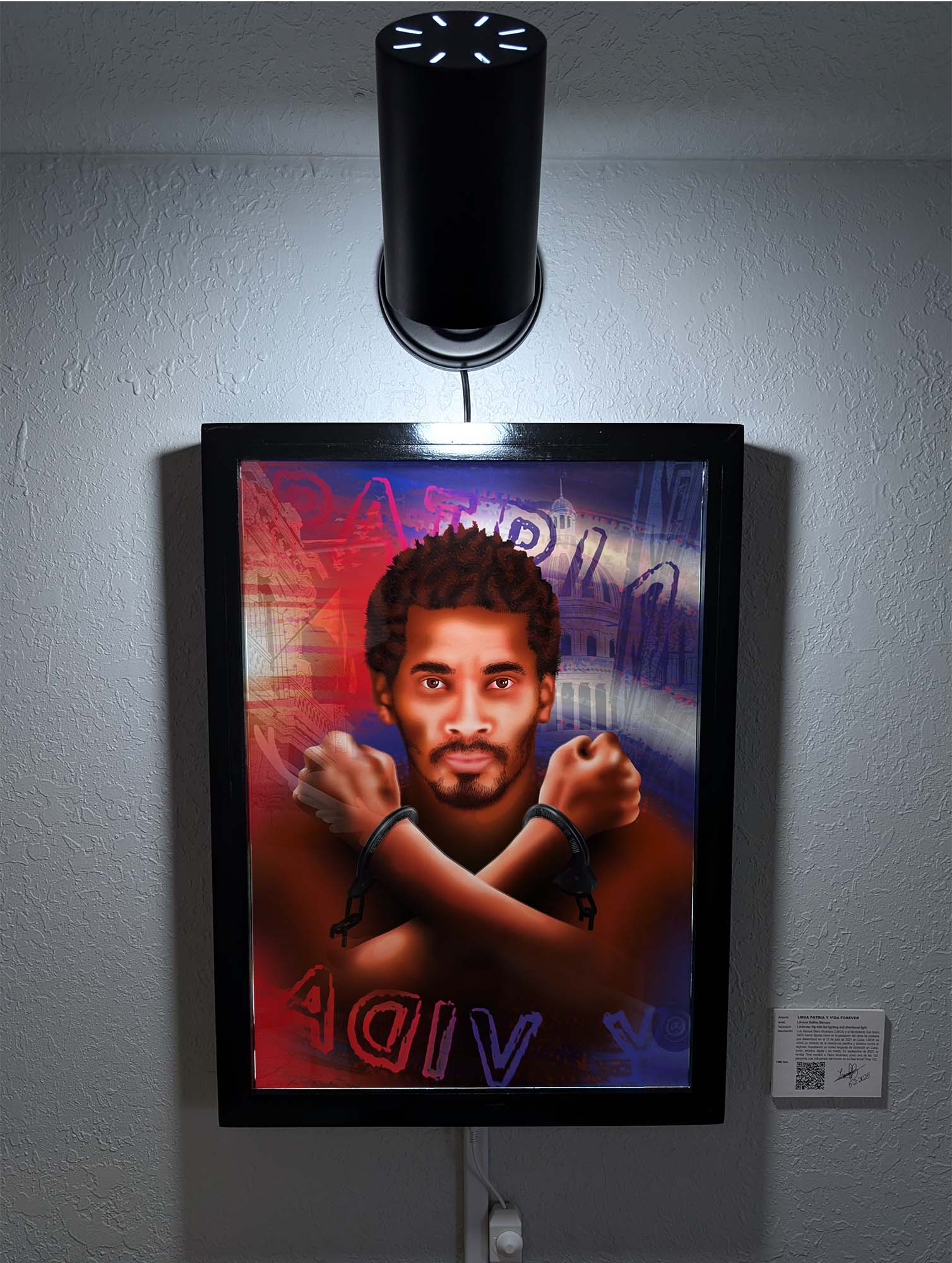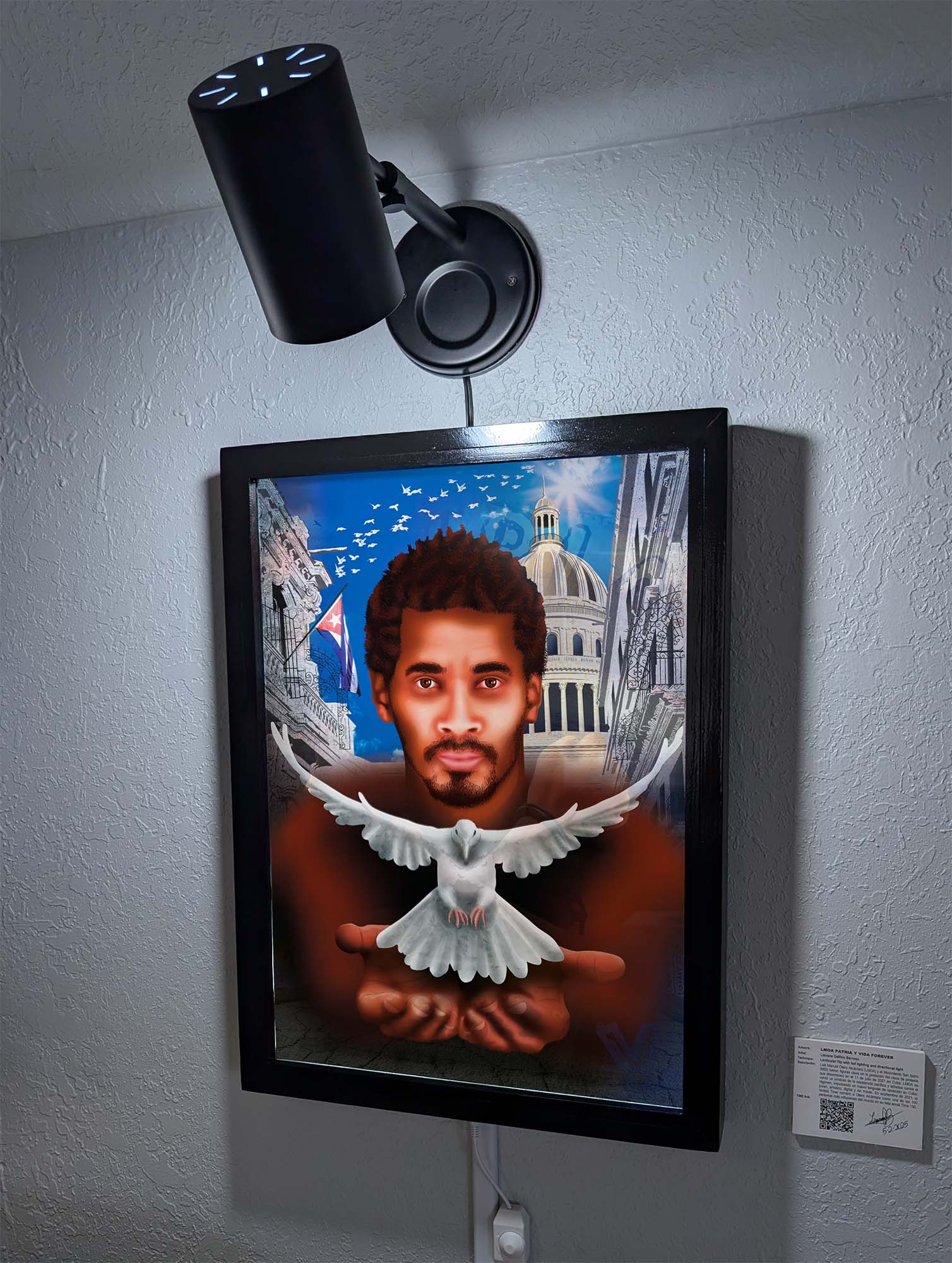LMOA PATRIA Y VIDA FOREVER Artist Statement
The artwork is composed of three graphic images that are designed and fused together and can be viewed from various angles.
The first image is an enhanced version of the famous photograph taken during the July 11 protests, depicting two Cubans atop an overturned police car. This image is tattooed on Luis Manuel Otero Alcántara’s crossed arms in the shape of an X, representing defense, firmness, and forcefulness, leaving no room for misunderstanding. In his hands are two broken handcuffs, which can be seen if one looks carefully: “POLICE REPRESSION” and “CUBA DICTATORSHIP.”
Luis Manuel Otero Alcántara’s face shows deteriorated skin, reflecting the human deterioration due to the precarious conditions political prisoners endure in Cuba. The background shows the deteriorated state of Old Havana, a victim of the island’s backward policy. The buildings merge with an apocalyptic sky, representing the island’s difficult economic situation and lack of freedoms for more than 60 years. The birds fly north, representing the options that dissidents have always had: “Forced exile or years of indefinite imprisonment,” as Alcántara said:
“They have always made it clear to me that I will never get out of jail. Neither in five years nor after. So they gave me the option of exile.”
The second image, which merges the first and third, represents the Cuban flag with the phrase “Patria y Vida” (Homeland and Life). This phrase represents the political opposition and growing discontent in Cuba against the regime. It also alludes to the performances the artist has done with the Cuban flag for which he has been imprisoned.
The third image shows Luis Manuel Otero Alcántara being released. With his hands forward, he releases a white dove as a symbol of peace and freedom, announcing the end of the dictatorship. His skin and face appear more composed, and an air of peace and happiness can be seen in his gaze. The rebuilt Old Havana is visible in the background, along with a Cuban flag waving on a balcony. The blue, clear sky is illuminated by the sun, giving an air of life. This time, the birds are white and come from the north, representing Cubans who can now return to their homeland, free of tyranny.



The artwork titled “LMOA PATRIA Y VIDA FOREVER” was donated on May 9, 2025, to the organization La Casa Cuba de Tampa, a non-profit entity in the United States that promotes human rights and opposes the one-party regime in Cuba. The artwork is currently on display in the organization’s lobby.
July 11th
The 2021 July 11 protests (11J) in Cuba represented an unprecedented moment in the country’s history since the 1959 Revolution. The protests were the largest anti-government demonstrations in decades and expressed the deep social, political, and economic unrest that had been building for years. The protests were a collective cry of desperation and yearning for change, highlighting the internal tensions of the Cuban system and the desire of many citizens to live in a country with more freedoms, better living conditions, and democracy.
The San Isidro Movement (MSI) and Luis Manuel Otero Alcántara
The MSI and Otero Alcántara were pivotal in creating the climate of protest that culminated in the demonstrations on July 11, 2021, although they did not directly lead those protests. They represented the artistic, civic, and symbolic origins of a resistance that had gained strength in the months prior. The MSI emerged in response to Decree 349, which imposes censorship on artistic content not approved by the state.
Although they did not directly organize the 11J protests, their influence was fundamental, serving as a symbolic and political precedent. For example:
Otero Alcántara’s hunger strike from April to May of 2021 for the return of his confiscated works attracted national and international attention.
The MSI and Luis Manuel promoted a new language of opposition in Cuba that was young, artistic, digital, and fearless. This language served as an example for other artists and citizens who would later participate in the 11J protests.
The November 27, 2020 protest, in which more than 300 artists gathered in front of the Ministry of Culture to demand dialogue, was inspired by the MSI case and paved the way for the 11J protests.
Luis Manuel Otero Alcántara (LMOA):
Luis Manuel Otero Alcántara is a Cuban performance artist and dissident known for publicly criticizing the Cuban government and its policies. Since 2018, he has been detained dozens of times for these performances in violation of Decree 349, a Cuban law requiring artists to obtain permission in advance to hold public and private exhibitions and performances. On July 11, 2021, Cuban authorities detained him while he was on his way to a pro-freedom march. In September 2021, Time magazine named Otero Alcántara as one of the 100 most influential people in the world in its annual Time 100 list. In June 2022, he was sentenced to five years in a maximum-security prison in Guanajay, Artemisa Province, Cuba.
TIME magazine’s link to LMOA:
https://time.com/collection/100-most-influential-people-2021/6096092/luis-manuel-otero-alcantara/
